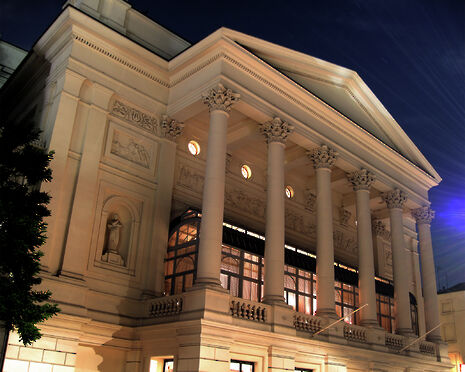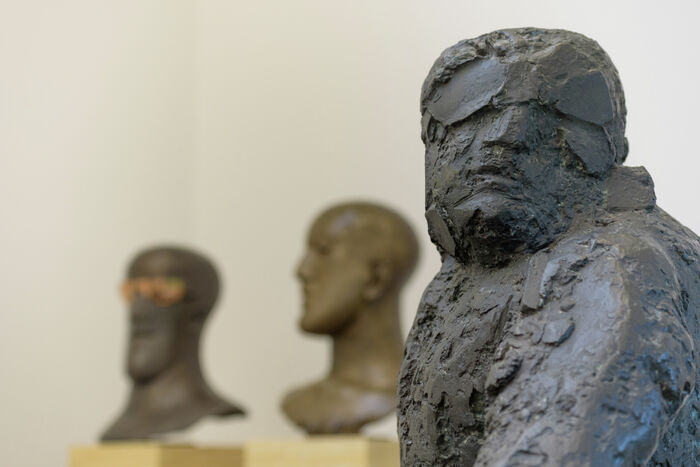Review: Opera: Passion, Power and Politics
Phoebe Day reviews the V&A’s exhibition on opera, and questions the accessibility of the genre whilst applauding the success of the show

The V&A’s current exhibition, Opera: Power, Passion and Politics, offers a revisionist interpretation of the most misunderstood art form. With tickets costing as much as £100, opera is widely considered a stale and conservative past-time of the élite. The exhibition demonstrates that this is far from the case. Although written about the theatre, Shakespeare’s metaphor “all the world’s a stage” applies equally to opera. Far from being remote and unrealistic melodramas, operas are deeply embedded within the societies which produced them. They are powerful and often subversive testimonies to their times.
Opera: Power, Passion and Politics does not present a comprehensive survey of the history of opera, nor does it attempt to do so. Instead, it traces opera’s evolution through seven key premieres in seven cities, from Monteverdi’s 1642 The Coronation of Poppea, in Venice, to Shostakovich’s 1934 Lady Macbeth of Msensk, in Leningrad. The aim of the show is to demonstrate the various ways in which operas interact with their social contexts, and is the first exhibition to take place within the museum’s new Sainsbury Gallery. In many respects, opera is the perfect subject to inaugurate the space: incorporating music, drama, and the visual arts, the art form is a great gesamtkunstwerk that is every bit as eclectic as the museum’s collection. The gallery, an inky black space filled with exhibits illuminated by theatrical spotlights, resembles the auditorium of an opera house; it is essentially an immersive time capsule which transports the visitor from premier to premier.
The exhibition allows the visitor to enter the worlds of the premiers’ contemporary audiences and to share their experiences. In the space dedicated to The Coronation of Poppea, a range of artefacts evoke the hedonistic and libertarian spirit that gave birth to opera. This opera was first performed during the carnival season, a period in which masquerade broke down social barriers and allowed different classes to intermingle. This social fluidity is highlighted by a fabulous pair of punched kid leather chopines, a type of women’s platform shoe worn by Venetian courtesans and aristocrats alike. Other luxurious artefacts including Murano glasswork recreate the visual culture of the Venetian merchants and aristocrats who patronised the city’s first theatres. They are displayed in intimate vitrines which draw upon the city’s love of secrecy and disguise. If visitors to The Coronation feel themselves to be lost amongst its heterogeneous audience, then visitors to Wagner’s 1861 Tannhauser in Paris are invited to construct their own identity. An ‘opera hat’ (a spring-loaded collapsible top hat that was placed under the seat during a performance), a pair of ornate opera glasses, and a selection of decorative fans provide the visitor with the fashionable props of the Parisian audience.
“Having entered the exhibition never having seen an opera, I left the exhibition feeling as though I had witnessed seven”
In one respect, the visitor’s experience of the productions is more complete than that of their contemporary audiences, as they adventure behind-the-scenes. In the space dedicated to Handel’s 1711 Rinaldo in London, there is a working replica of the original stage set. A ship moves through a storm before the clouds depart and it reaches safety in an installation inspired by the production’s original stage instructions. A sumptuously embroidered male costume allows the visitor to identify with the performers, and visitors are also initiated into the creative processes of the composers. Autograph scores by Monteverdi, Mozart, and Shostakovich, and Mozart’s Prague piano bring the visitor closer to these individuals and are sure to excite opera-buffs. In the space dedicated to Lady Macbeth of Msensk there is a reconstruction of Shostakovich’s study which is bound with red tape to symbolise Stalin’s suppression of the opera. A film in the background shows the composer furiously playing a scene from the opera.
The exhibition is undoubtedly a visual spectacle but, immersive as it is, it incorporates all the senses. Even taste is included thanks to the silver coffee implements exhibited in the space dedicated to Rinaldo. Perhaps most impressive of all is the way in which the exhibition incorporates sound – after all, music is opera’s essential ingredient. Visitors are given headsets which transform the exhibition into a high-brow silent disco; fitted with wireless technology, the headset tracks the visitor’s progress around the exhibition and changes music accordingly. The music is interspersed with insightful commentary by Antonio Papanno, the Musical Director of the Royal Opera House. The most spectacular aural experience can be found in the installation that comes just after the space dedicated to Verdi’s 1842 Nabucco in Milan. 150 photographs taken by Matthias Schaller of the auditoria of Italy’s opera house, and one of Argentina’s, fill the walls. As the visitor enters the space, a full 360 degree sound installation of the Royal Opera House’s chorus singing Verdi’s Chorus of the Hebrew Slaves begins to play. As visitors look at the photographs, they feel as though they are performing in the chorus.
The exhibition’s final space brings visitors back to the present day and asks them to re-evaluate contemporary opera. Its walls are lined with screens which flit between a range of international 20th- and 21st-century productions. Having entered the exhibition never having seen an opera, I left the exhibition feeling as though I had witnessed seven. Although the exhibition didn’t convince me of opera-going’s modern-day accessibility, given its expense, it did convince me of the art form’s contemporary relevance. It is interesting to note that the exhibition is a collaboration with the Royal Opera House, who are evidently keen to diversify their audience. Perhaps, then, this is the start of opera’s renaissance.
Opera: Power, Passion and Politics is open at the V&A until 25 Feb 2018
 News / Cambridge study finds students learn better with notes than AI13 December 2025
News / Cambridge study finds students learn better with notes than AI13 December 2025 News / Cambridge Vet School gets lifeline year to stay accredited28 November 2025
News / Cambridge Vet School gets lifeline year to stay accredited28 November 2025 Science / Did your ex trip on King’s Parade? The science behind the ‘ick’12 December 2025
Science / Did your ex trip on King’s Parade? The science behind the ‘ick’12 December 2025 News / Uni Scout and Guide Club affirms trans inclusion 12 December 2025
News / Uni Scout and Guide Club affirms trans inclusion 12 December 2025 Arts / Modern Modernist Centenary: T. S. Eliot13 December 2025
Arts / Modern Modernist Centenary: T. S. Eliot13 December 2025










